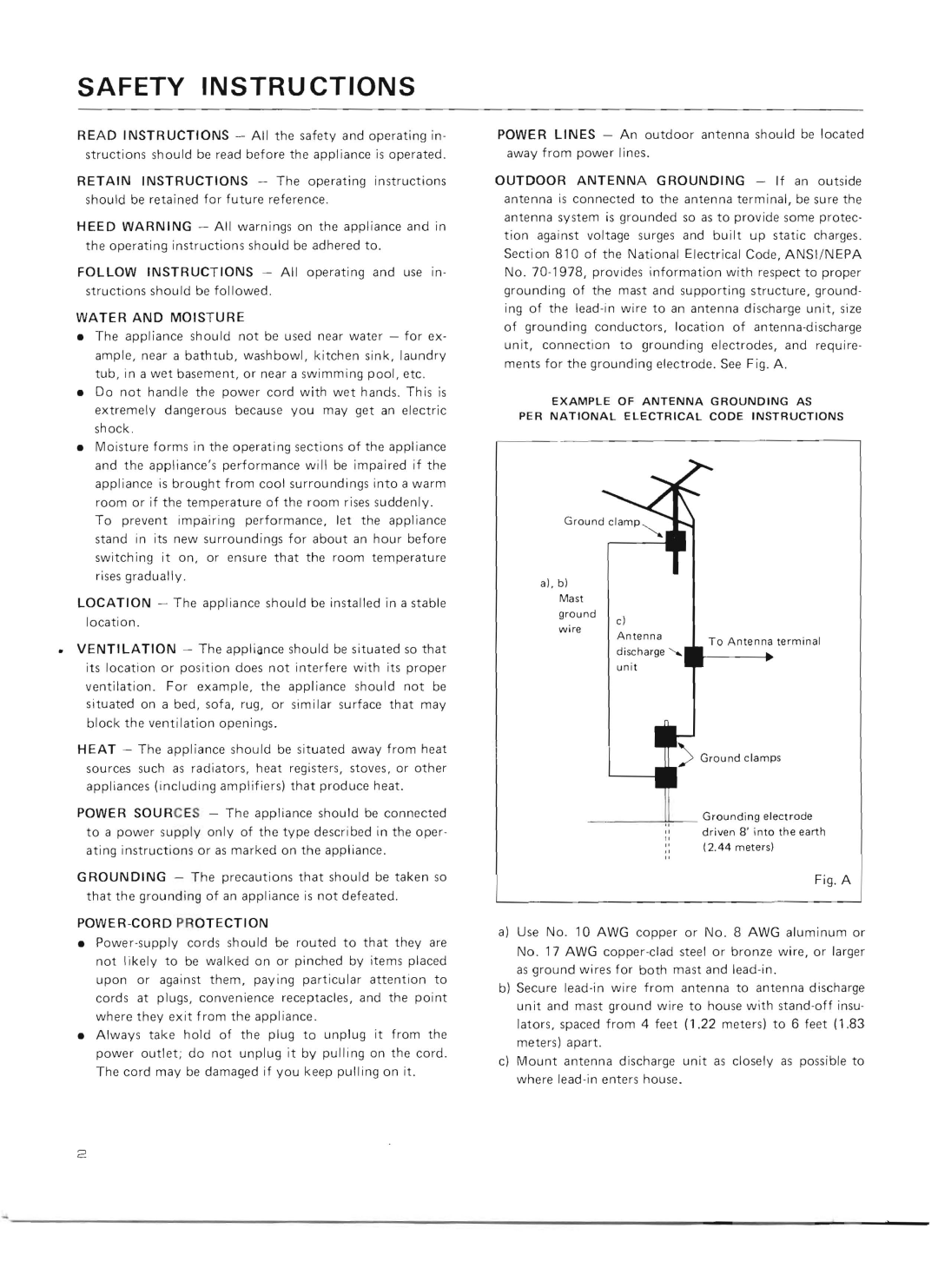
SAFETY INSTRUCTIONS
READ INSTRUCTIONS - All the safety and operating in struction s should be read before the appliance is operated.
RETAIN INSTRUCTIONS - The operating instructions should be retained for future reference.
HEED WARNING - All warnings on the appliance and in the operating instructions should be adhered to.
FOLLOW INSTRUCTIONS - All operating and use in structions should be followed.
WATER AND MOISTURE
• The appliance should not be used near water - for ex |
ample, near a bathtub, washbowl, kitchen sink, laundry |
tub , in a wet basement, or near a swimming pool, etc. |
• 00 not handle the power cord with wet hands. This is |
extremely dangerous because you may get an electric |
shock. |
• Moisture form s in the operating sections of the appliance |
and the appliance 's performance will be impaired if the |
appliance is brought from cool surroundings into a warm |
room or if the temperature of the room rises suddenly. |
To prevent impairing performance, let the appliance |
stand In its new surroundings for about an hour before |
switching it on, or ensure that the room temperature |
rises gradually. |
POWER LINES - An outdoor antenna should be located away from power lines.
OUTDOOR ANTENNA GROUNDING - If an outside antenna is connected to the antenna terminal, be sure the antenna system is grounded so as to provide some protec· tion against voltage surges and built up static charges . Section 810 of the National Electrical Code, ANSI/NEPA No.
EXAMPLE OF ANTENNA GROUNDING AS
PER NATIONAL ELECTRICAL CODE INSTRUCTIONS
LOCATION - The appliance should be installed in a stable location.
•VENTILATION - The appliance should be situated so that its location or position does not interfere with its proper ventilation. For example, the appliance should not be situated on a bed, sofa, rug, or similar surface that may block the ventilation openings.
HEAT - The appliance should be situated away from heat sources such as radiators, heat regi sters, stoves , or other appliances (including amplifiers) that produce heat.
ai, b) Mast ground
wire
c) |
|
| |||
Antenna | To Antenna terminal | ||||
discharge | |||||
|
| ||||
unit |
|
|
|
| |
|
|
| |||
|
|
|
|
| |
Ground clamps
POWER SOURC ES - Th e appliance should be conn ected to a power supply only of the type described in the oper ating instructions or as marked on the appliance.
GROUNDING - The precautions that should be taken so that the grounding of an appliance is not defeated.
POWER-CORD PR OTECTION
•
•Always take hold of the plug to unplug it from the power outlet; do not unplug it by pulling on the cord. The cord may be damaged if you keep pulling on it.
_ ..__ _ _ *_ _ Grounding electrode driven 8' into the earth (2.44 meters)
Fig. A
a)Use No.1 0 AWG copper or No.8 AWG aluminum or No. 17 AWG copper-clad steel or bronze wire, or larger as ground wi res for both mast and lead-in.
b)Secure lead·in wire from antenna to antenna discharge unit and mast ground wire to hou se with stand·off insu· lators , spaced from 4 feet (1.22 meters) to 6 feet (1 .83 meters) apart.
c)Mount antenna discharge unit as closely as possible to where lead-in enters house.
2
